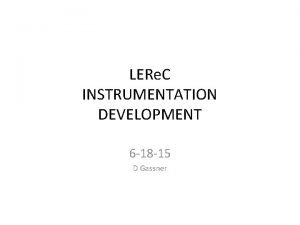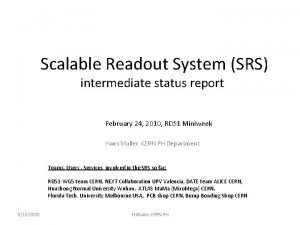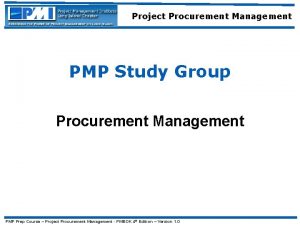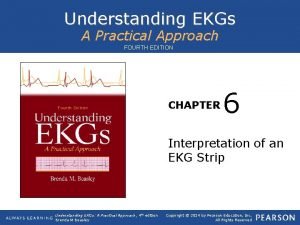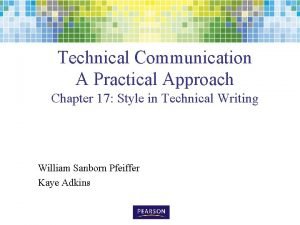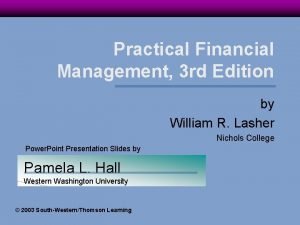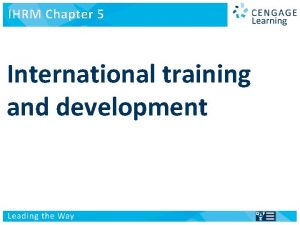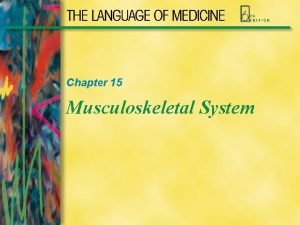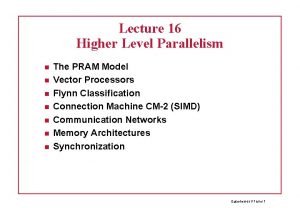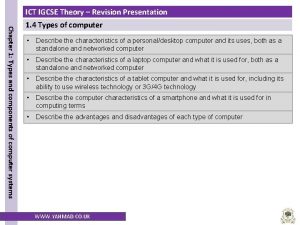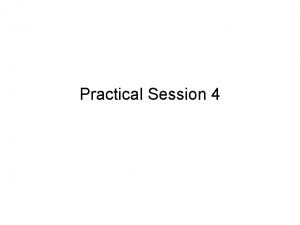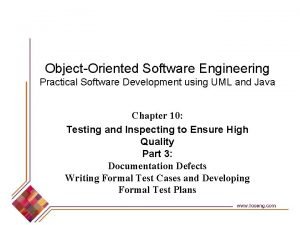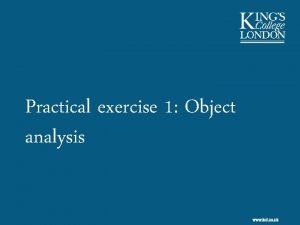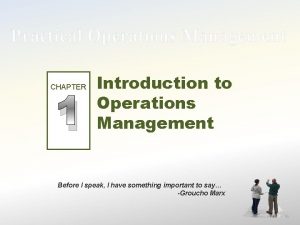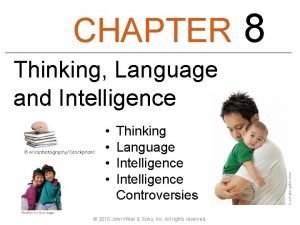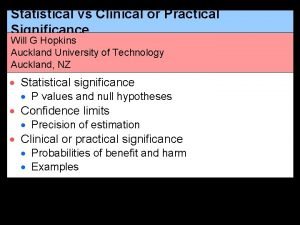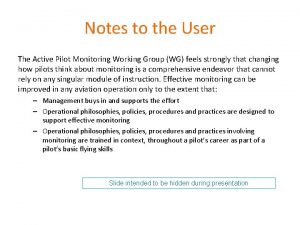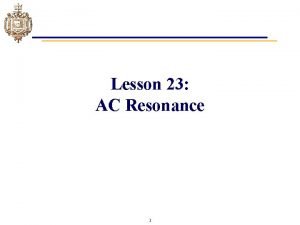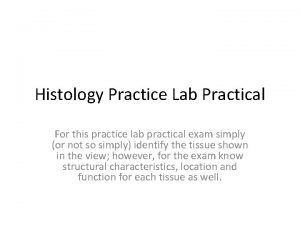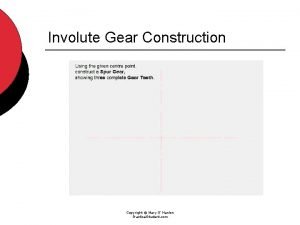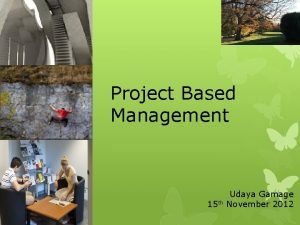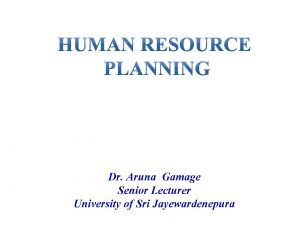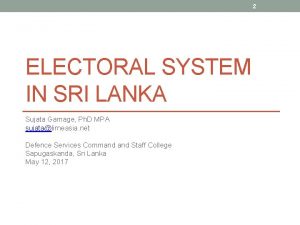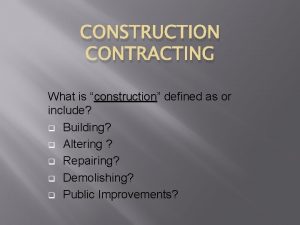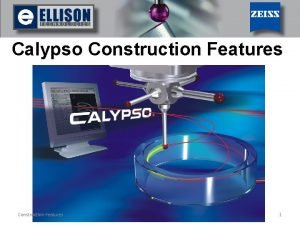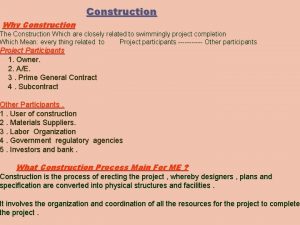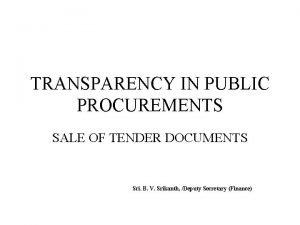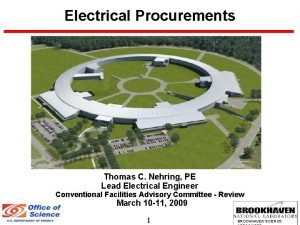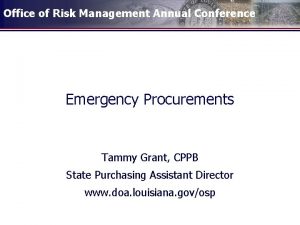Procurements in Construction Practical Approach Palitha Premasiri Gamage























































- Slides: 55

Procurements in Construction Practical Approach Palitha Premasiri Gamage Pg. Dip in Arb. (UK), FRICS, FAIQS, MCIArb, AIQS. SL n Chartered Quantity Surveyor & RICS APC Interview Panel Chairman / Assessor & Counsellor. n Former Chairman of Steering Committee of AIQS Oman Branch & AIQS APC Interview Panel Chairman. n Oman Representative of IQS Sri Lanka. Email: palirenu 93@gmail. com

Today’s Discussion n Today’s topic is to explain Procurement in Construction and its Practical Approach

Issues to be discussed v The Procurement mainly covers the following three aspects v - The Working Arrangement. - Forms of Contract. (Briefly touch in today’s Discussion) - The Tendering Procedure. (Not part of today’s discussion ) v

The Working Arrangement n n Traditional Path (General Contracting) Design & Build Path Management Contracting Construction Management Design & Manage Path

Traditional Path n Traditional procurement path can be divided into the following two methods 1) Sequential method. - The contractors receive complete information from the consultants on which to base on their tenders and then successful contractor will proceed with the construction of the contract. This is a normal traditional method 2) Accelerated method- It may be either in competition or by negotiation based on partially complete design information. The successful contractor assists the design team for the completion of the design and then get on with the construction process. When the time is an essence, the accelerated traditional system can be implemented. It is most likely to be successful if a project office is created in which the whole project team work as a Consortium.

Traditional Path n Most commonly used procurement path and it represents traditional “Architect – led” competitive tendering approach. n Before gen. contracting was found series of direct contracts or D & B. n Response to increasing sophistication & complex of construction technology. Separation of construction from design.

Traditional Path n The clients or their consultants prepare tender documents. n Then a main contractor is appointed.

Traditional Path n Appointment of the main contractor will be either by competitive tendering or by negotiation. (i. e. without competition).

Traditional Path n n There are three basic types under traditional route Lump Sum (Fixed price or Fluctuation price) Re-Measurement (Fixed price or Fluctuation price) Cost reimbursement. ( % Fee or Fixed Fee or fluctuating Fee)

Traditional Path n Lump sum type Lump sum contracts can be procured with quantities, which will be based on drawings and firm bills of quantities, and provisional items such as provisional sums and prime cost sums. Lump sum contracts can also be procured without quantities, which will be based on drawings and a specification together with a schedule of work. How about the clause no. 56 of Oman Standard?

Traditional Path n Re-Measurement Type The basis of this type is a re-measurement of all quantities of the work and will then be priced at the relevant prices contained in the tender document. Clause no. 55 of Oman Standard Document for Building & Civil Engineering Works.

Traditional Path n Cost reimbursement contracts This type of contracts are often referred to as “Cost – Plus” contracts because the method of payment is by reimbursement to the contractor of his prime cost or actual cost of labour, plant, and materials plus an agreed fee to cover management, overheads & profit.

Traditional Path n Cost plus percentage fee The contractor is paid a fee equal to an agreed percentage of the prime costs of labour, materials and plant used in carrying out the work.

Traditional Path n Cost plus fixed fee The fee paid to the contractor is a fixed sum, which normally does not vary with total prime cost, but it is based on estimate of the total cost. Examples are maintenance contracts in oil fields and refineries; facilities management contracts.

Traditional Path n Cost plus fluctuating fee The fee fluctuates in relation to the success of the project. If the total cost is less than an agreed sum (the “target cost”) then the fee is increased (a bonus). If the total cost is higher than an agreed sum then the fee is reduced. (Penalty) “Prime Cost” means the total cost to the Contractor of buying materials, goods and components, of using or hiring plant and of employing or hiring labour, in order to carry out construction works.

Traditional Path - GMP n n Guaranteed contracts maximum price This is a type of target cost contract. Agreed guaranteed maximum price cannot be exceeded. Any savings on the guaranteed maximum price would be shared between the contractor and employer.

Traditional Path -GMP n GMP contracts are very difficult to set up and administer for two reasons 1) Difficult to agree a realistic maximum price as the contractor tries to set the figure too high, making it meaningless. 2) All variations will require the maximum price to be reassessed.

Traditional Path n Advantages A high level of cost certainty. The cost control process is inherent in the design stage should help to ensure good budgetary control and good value for money. Active involvement of the client during the design process should increase the probability of achieving the client’s requirements.

Traditional Path n Disadvantages Since the process is essentially linear, it is very timeconsuming. There is limited opportunity to ‘fast-track’ projects. It is not suitable for projects where an early start on site is essentially a pre-requirement. No opportunity to incorporate any ideas from the contractor which might make the design more ‘ buildable’ thus speeding construction and increasing value for money.

Traditional Path n Disadvantages Separating the design and construction functions may result in divided responsibility for defects. If there are problems, the designer and contractor may simply blame each other. It is impractical to prepare a complete design due to time needed and because sometimes choices need to be left as late as possible in the design process. If the design is incomplete general contracting begins break down.

Traditional Path n Suitable Standard Forms In Oman: Oman Standard Document for Building & Civil Engineering Works Third / Fourth Editions. FIDIC 1999 – Co. C for Construction for Building & Eng Design by Employer.

Traditional Path n Risk in General Contracting Financial Risk: Estimating & Tendering, Payments, LDs & Apportionment of Risk by Standard Forms. Risk of default: Main Contractor’s responsibility, Insufficient premum allowed, insolvency.

Traditional Path n Risk in General Contracting Completion Risk: Substantial Completion, Final Completion, Maintenance Period; Contractor’s right to complete unless a party terminate the contract. Risk of delay: Critical Path, Excusable Delays, Non Excusable Delay, EOT & Additional Costs.

Design and build path The whole project covering design and construction is normally undertaken as a single contract. Sometimes this is called as “Turnkey” “All-in” or one of the “package deal” in construction.

Design and build path In summary, employer makes his requirements known directly to one organisation which both designs and carries out the work.

Design and build path n Suitable only for simple buildings such as factories , warehouses and agricultural buildings such as green houses. n Now it has recently been used for complex buildings such as hospitals.

Design and build path The main advantage claimed for this integrated approach to design and construction is that it results in a design which is better suited to the contractor’s construction method, giving lower production costs and a shorter contract period. It also allows an element of design competition which is absent from the conventional system, and the optimisation of design and production costs.

Design and build path The production-led type buildings should be procured under this path because the contractor can design the project based on the client’s requirements as well as production requirement.

Design and build path Three main various systems used for selection of DB contractor. Single entry – The contractor is appointed at the beginning to design and construct the project probably after some preliminary appraisal but without competition. Competitive entry - project documents would be produced outlining the client’s space and quality requirements.

Design and build path Competitive entry - Three to five highly experienced contractors are usually invited to submit a proposal which includes design, specifications, price and completion date.

Design and build path Develop and construction - under this method partial or outline design is developed separately by the Consultant designer prior to inviting to submit their proposals. Based on partial or outline design, each contractor tenders to complete the design and construct the project.

Design and build path n n n The most important two factors affecting the success of a design and build project are: 1) The client’s brief 2) The quality control and assurance procedures (QA).

Design and build path n n n Advantages Single point responsibility provided i. e. the contractor is solely responsible for failure and/or the construction. The client has only one person to deal with, namely, the design and build contractor, whose design team includes architects, quantity surveyors, structural engineers, services engineers, etc. Certainty of cost. The client is aware of his total financial commitment from the beginning. Improved Communications - Close intercommunication between the contractor’s design team and construction teams promotes co-operation in achieving smoother running of the contract and prompt resolution of site problems.

Design and build path n Advantages n Specialization and know-how. n Speed construction.

Design and build path n n n Disadvantages: Cost of variations - Variations from the original design are discouraged by the contractor and, if allowed, they are expensive. Lack of independent advice to client - The client has no means of knowing whether he is getting best value for money unless he employs his own independent advisers, which adds to his costs. Quality control in hands of contractor - The quality control and assurance procedures totally in contractor’s hands. aesthetic quality of design unlikely.

Design and build path n Suitable Standard Forms n FIDIC Suite: n n Co. C for DB & Turnkey 1995 EPC Turnkey 1999 Plant and DB 1999 JCT Suite: JCT DB 2011

Design and build path n Risk in DB n Money n Completion of the project n Default by the Contractor n Time n Quality

Management Path n The management path procurement system can be divided into two categories and as follows: n Management Contracting n Construction Management.

Management Contracting n The principal of management contracting is that the client engages the management contractor to participate in the project at an early stage, contribute construction expertise to the design and manage the construction.

Management Contracting n n n The contractor is appointed on a fee basis. The management contractor does none of the construction work himself but solely for managing the construction process. The management contracting is a procurement method consisting of 100% sub-contracting.

Management Contracting n n n Advantages Work can begin on site as the first one or two works packages have been designed. Overlapping of design and construction can significantly reduce the time requirement, resulting in an earlier return on the client’s investment.

Management Contracting n n n Advantages The contractors’ practical knowledge and management expertise is available to assist the design team. The contractor, being part of the client’s team, is able to identify with the client’s needs and interests.

Management Contracting n n Advantages Because works contracts are entered into close to the time of their commencement on site, they can be based on firm price tenders.

Management Contracting n Under this procurement path, the management contractor has an obligation to control costs. The client has to pay whatever the management contractor spends plus an amount for the management fee. The fee may be either lump sum or a percentage of prime cost.

Management Contracting n In this way the contract between the client and the management contractor is a cost reimbursement contract, therefore the client is carrying high degree of risk for the cost.

Construction Management n Construction management is a professional consultant service to the client, provided on a fee basis, with the design and construction services being provided by other organizations.

Construction Management n n n Advantages The construction work is more closely integrated (incorporated) into the management of the project. Close liaison between the construction manager and design team leads to prompt identification of and decisions relating to practical problems. Private of contract between the client and each of the works. Early start on site means that total project development time can be minimised. Early involvement of the construction manager can lead to design economies and increased value for money

Construction Management n n n Disadvantages The client has one more consultant and a number of contractors with whom to deal instead of only one main contractor. The client’s financial commitment is uncertain until the last of the works contracts has been signed.

Design and Manage Path n n The client invites the management (single) contractor to take responsibility for also managing the design phase. All works will carry out by specialist contractors.

Design and Manage Path n n The initial scope design is often executed by the client’s own staff or an independent design firm, and forms the basis for inviting tenders. The contractor offering lowest cost scheme for full design and construction is selected. Consideration to be given to reputation, quality of services and management fee.

Project Management n n Project management is taken to mean management of the whole project from inception to completion. These entire procurement paths involve the client to some extent in dealing with planners, local authorities, consultants and contractors. This can be very demanding and time consuming.

Project Management n n Project management is not a procurement path, but is another layer of management that is sometimes necessary for particular projects. The decision to use a project manager must come from client.

Project Management n n Where the client is a large organisation with little in-house construction knowledge, the project manager act as its agent, dealing with the contractor and all the construction consultants. This gives a single point of contract for the team and liaising with the contractor, but is not responsible for managing the site construction.

End of Session

Questions?
 Gamage construction
Gamage construction Dr palitha edirisingha
Dr palitha edirisingha Aruna gamage
Aruna gamage Ambulance communication systems
Ambulance communication systems Procurements
Procurements Procurements
Procurements Close procurement process output
Close procurement process output Technical communication a practical approach
Technical communication a practical approach Understanding ekgs a practical approach
Understanding ekgs a practical approach Technical communication a practical approach
Technical communication a practical approach Practical approach pediatrics
Practical approach pediatrics Deep learning approach and surface learning approach
Deep learning approach and surface learning approach Bandura's reciprocal determinism
Bandura's reciprocal determinism Multiple approach avoidance conflict
Multiple approach avoidance conflict Difference between virtual and datagram circuit
Difference between virtual and datagram circuit Study approach meaning
Study approach meaning Theoretical models of counseling
Theoretical models of counseling Traditional approach of development
Traditional approach of development Waterfall approach in international marketing
Waterfall approach in international marketing Practical machine learning quiz 2
Practical machine learning quiz 2 Argon fluoride laser
Argon fluoride laser Vce physics poster
Vce physics poster Strategic gender needs and practical gender needs
Strategic gender needs and practical gender needs Practical g
Practical g Sqa appointee portal
Sqa appointee portal Practical intelligence definition
Practical intelligence definition Practical financial management
Practical financial management Practical assistance for expatriates
Practical assistance for expatriates Transformer lecture
Transformer lecture Chapter 15 musculoskeletal system practical
Chapter 15 musculoskeletal system practical Casmuo
Casmuo La state board of cosmetology
La state board of cosmetology What is practical endorsement
What is practical endorsement Natural science term 2 grade 7
Natural science term 2 grade 7 Practical pram models
Practical pram models Ict igcse practical revision presentation
Ict igcse practical revision presentation New criticism slideshare
New criticism slideshare Practical application of solar energy
Practical application of solar energy Practical extraction and report language
Practical extraction and report language Practical criticism examples
Practical criticism examples Practical session meaning
Practical session meaning Practical investment fund
Practical investment fund Sandwich testing
Sandwich testing Practical exercise definition
Practical exercise definition Practical operations
Practical operations Life science grade 11 kidney practical
Life science grade 11 kidney practical Thinking, language and intelligence psychology summary
Thinking, language and intelligence psychology summary Wise in a clever or practical way
Wise in a clever or practical way Practical significance example
Practical significance example Identify the tissue
Identify the tissue A practical guide for improving flight path monitoring
A practical guide for improving flight path monitoring Final practical
Final practical Practical machine learning quiz 4
Practical machine learning quiz 4 Practical rl
Practical rl Histology practical exam
Histology practical exam Practical student.com
Practical student.com




